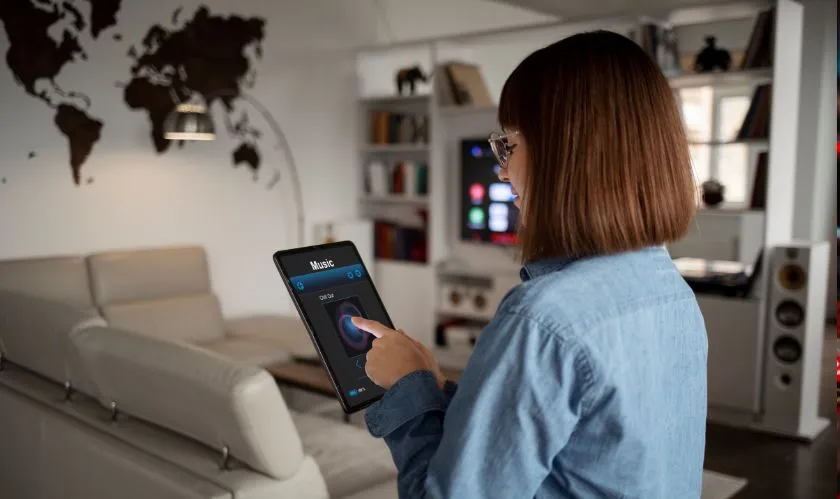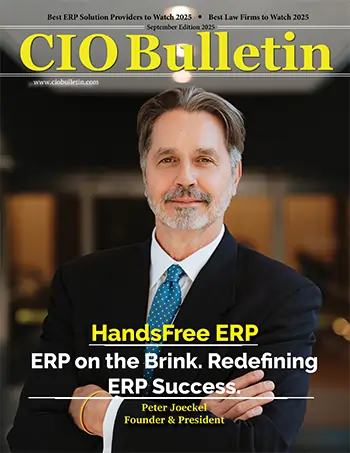Home Technology Iot Smart Home Tech — Can It Str...
Iot

CIO Bulletin
25 September, 2025
Hurricanes disrupt lives in sudden, destructive ways, leaving behind damaged roofs, flooded interiors, and neighborhoods without power. In the aftermath, the strength of an insurance claim often depends on evidence that shows what happened and when it occurred. Standard photographs can capture damage, yet they rarely provide a full timeline of events.
Smart home technology offers a stronger foundation for documentation. Cameras, leak detectors, and connected thermostats record timestamped data that establishes cause and sequence. Such records give adjusters clear proof of progression—from first impact through secondary damage. With storms striking more frequently and costs mounting, households gain significant advantages from devices that preserve reliable logs in formats professionals can easily review.
A camera capturing shingles torn away in the dark provides a timestamped record that carries weight during claim reviews. Linked files strengthen that record: motion clips reveal impact, leak detectors pinpoint water entry, and thermostat logs highlight temperature swings that support interior damage assessments. Each dataset adds credibility by establishing sequence and cause.
Original exports preserve the integrity of this information. Motion files saved as MP4, sensor reports as CSV or PDF, and thermostat histories with hourly readings maintain verifiable detail. Labeling by room and date adds clarity, while cloud backups paired with a flash drive reduce delays. Organized archives also help a hurricane damage attorney present evidence convincingly during disputes.
Preparation begins long before hurricane season reaches its peak, when devices are calm and operational. Swapping batteries every six months prevents sudden failures, while storing extras and power banks near key hubs helps systems keep running during outages. Recording short baseline videos from consistent positions around the property establishes a reliable reference point that carries weight in later assessments.
Account access must also remain secure under stress. A password manager paired with a printed, water-resistant copy guarantees entry even when connections fail. Labeling spare batteries, bundling chargers with device boxes, and exporting logs to a USB before storm forecasts bring peace of mind. Simple, early steps create evidence that remains credible when adjusters arrive.
An orderly archive removes doubt and prevents reviewers from piecing together fragments on their own. Downloading raw files directly from device apps maintains timestamps and data integrity, while screen captures strip away important metadata. Grouping evidence by damage type—roof, windows, or flooding—paired with notes on severity helps professionals interpret details quickly.
An index spreadsheet ties everything together by listing filenames, device sources, timestamps, and short descriptions. Keeping one copy in the cloud and another on a removable drive balances accessibility with security. Clear naming conventions such as 20250909_roof_front.mp4, combined with a concise index, accelerate collaboration among adjusters, attorneys, and contractors while reducing confusion during key phases of recovery.
Redundancy becomes essential once files hold the key to claim outcomes. Maintaining at least two copies of each export—one in cloud storage and another on local hardware—guards against loss. USB drives add portability, allowing evidence to be shared easily with contractors or attorneys. Standard formats such as MP4, CSV, and PDF preserve readability and protect timestamp accuracy.
Automated syncing simplifies the process by exporting data whenever devices recharge on trusted Wi-Fi. Mirroring folders to a secondary cloud service reduces single-point failure, while rotating labeled USB drives each month provides reliable offline access. A dedicated external drive, encrypted for safety, offers long-term storage that remains available even when networks fail.
Devices that continue recording when the grid falters provide adjusters with stronger evidence than shaky handheld videos. Selecting technology that supports local storage—such as microSD, NVR, or a network drive—prevents reliance on a single cloud account. When paired with mirrored online archives, this setup keeps documentation accessible under changing conditions.
File flexibility also matters. Products that export recordings in MP4 and logs in CSV or PDF maintain compatibility across platforms. Battery-backed clocks, tamper indicators, and straightforward export functions preserve credibility for months after storms. A practical standard is equipment capable of maintaining 90 days of local archives with optional cloud support, balancing resilience with professional acceptance.
Connected technology offers households a powerful advantage in hurricane recovery by providing structured, verifiable evidence of damage as it unfolds. Devices that record video, detect leaks, and track temperature shifts create credible timelines that adjusters can interpret with confidence. Well-organized archives, maintained in multiple formats and backed up across cloud and hardware, streamline collaboration and minimize disputes. Choosing resilient equipment before storm season helps preserve this information even when power or connectivity falters. As hurricanes grow stronger and insurance disputes more complex, families who integrate preparation with reliable technology gain faster claim resolutions and lasting peace of mind afterward.







